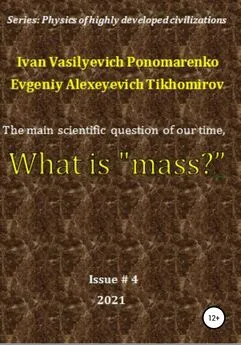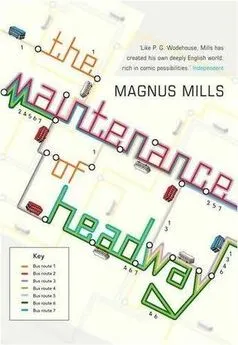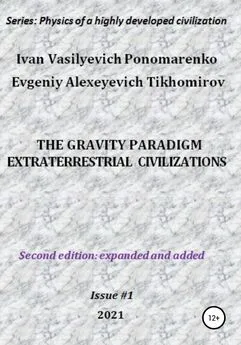Evgeniy Tikhomirov - The main scientific question of our time, what is «mass»? Series: Physics of a highly developed civilization
- Название:The main scientific question of our time, what is «mass»? Series: Physics of a highly developed civilization
- Автор:
- Жанр:
- Издательство:неизвестно
- Год:2021
- ISBN:978-5-532-97580-4
- Рейтинг:
- Избранное:Добавить в избранное
-
Отзывы:
-
Ваша оценка:
Evgeniy Tikhomirov - The main scientific question of our time, what is «mass»? Series: Physics of a highly developed civilization краткое содержание
The true phenomenological concept of "mass" is the number of corpuscles of dark (negative) matter in a body, or in an elementary particle. "Mass" is another synonym for dark (negative) matter.
The main scientific question of our time, what is «mass»? Series: Physics of a highly developed civilization - читать онлайн бесплатно ознакомительный отрывок
Интервал:
Закладка:
Ivan Ponomarenko, Evgeniy Tikhomirov
The main scientific question of our time, what is "mass"? Series: Physics of a highly developed civilization
The Introduction
In this book, we will follow the evolution of the concept of "mass", which is absolutely necessary at the moment, since this fundamental concept of physics has undergone an undesirable evolution in favor of the prevailing theories of the twentieth century. The concept of "mass" in the macrocosm has lost its material content and has become a calculated physical quantity. In the microcosm, the concept of "mass" has received full materiality, but not the same as in classical mechanics. According to these two transformations in concepts, the concept of "mass" was torn into "macro" mass and "micro" mass, which undermines the material unity of the world and leads to paradoxes. It turns out that the mass of a body is not equal to the sum of the masses of elementary particles of this body, "macro" mass, and "micro" mass in modern science have completely different physical meaning and physical properties. This nonsense is one of the paradoxes that led the science of physics to the fundamental and comprehensive crisis of theoretical physics. It seems that our right hand (quantum mechanics) does not know what the left hand (relativists) is doing at all; in science this is very bad. Recently, there has been a third direction of struggle with the classical concept of mass, and some theorists plan to banish this concept from physics altogether. The return to physics of the classical understanding of mass, refined and supplemented with information by a highly developed civilization, is now a task of paramount importance.
1. The Transformation of the concept of mass for the sake of theories
Perhaps there is no single physical concept that has suffered the most from the prevailing theories in physics, as the concept of "mass". At the present time, in our orthodox physics, everything that can be hung on our long-suffering mass has been hung on it. We now have mass responsible for inertia, for gravity, and for energy. Everywhere you look; we have mass, just mass and nothing but mass. That this is not the case, we have already found out earlier, when we considered the issues of gravity in the first issue of the physics of a highly developed civilization series "The Paradigm of gravity of Extraterrestrial civilizations" [1]. So the mass of the test body, consisting only of substance has nothing to do with gravity, for a round of the gravity of the test body is not responsible for its mass, but positive (light) matter, which is part of the elementary particles of this test body, which just has no mass. Thus, to bring final clarity to this question of the masses is extremely necessary. And it is unlikely that we would be able to do it ourselves without the information of a highly developed civilization.
Mass as a scientific term was introduced by Newton as a measure of the amount of substance, before that, naturalists operated with the concept of weight. In the work "Mathematical principles of natural philosophy" (1687) Newton first defined the "amount of matter" in a physical body as the product of its density and volume. He further indicated that he would use the term mass in the same sense. Finally, Newton introduced mass into the laws of physics: first into Newton's second law (through the amount of motion), and then into the law of gravity, from which it immediately follows that weight is proportional to mass. Newton clearly pointed out this proportionality and even tested it on experience with all possible accuracy in those years: "Mass is determined by the weight of the body, because it is proportional to the weight, which I found by experiments on pendulums produced in the most accurate way" (these experiments Newton described in detail in volume III of his "Principles")
The etymology (origin) of the term "mass" (lat. Massa, from the other-Greek. μαζα) originally in ancient times meant a piece of dough. Later, the meaning of this word expanded, and it came to mean a whole, unprocessed piece of arbitrary matter; in this sense, the word is used, for example, in Ovid and Pliny.
Consider how the concept of "mass" changed in the XX century. So in the school textbook for the sixth grade for 1960, the following definition of mass is given.
"The amount of substance contained in a body is called the mass of that body."
As can be seen from this definition of mass, it was not even associated with inertia, but this does not mean anything, since children at that time were given knowledge in stages, just the inertial properties of mass were reflected in high school. In the sixth grade, they very strongly drew the children's attention only to the quantitative nature of mass, and in the sixth grade, they did not give the children such a concept as "inertia", which was given later. Here is a quote from a 1960 school textbook.
"So the mass of a loaf of bread is greater than the mass of a slice of bread, and the mass of a larger piece of sugar is greater than the mass of a smaller piece. A liter of water contains a thousand times more substance than a cubic centimeter of water and weighs a thousand times more than a cubic centimeter of water. In short, the weight and mass of bodies made of the same substance, the greater the volumes of these bodies.
The mass of the body can be judged by its weight. The greater the mass of the body, the greater the weight of this body,
This property of bodies makes it possible to compare by weight not only the masses of bodies from the same substance, but also the masses of bodies from different substances. Very precise experiments have established that if the weight of a body from one substance is five times, for example, more than the weight of another body from another substance, then the mass of the first body will be five times more than the mass of the second body.
When we compare the weights of bodies with the weights, we also compare the masses of these bodies."
As you can see from this quote, the article on mass in the sixth grade does not even mention the concept of "inertia", and the main emphasis is on the fact that mass is defined through weight. This of course greatly confused the children, and they had the illusion that mass and weight is the same thing. Moreover, at that time the unit of mass was a kilogram, abbreviated as kg, and the unit of weight was expressed in kilograms, abbreviated as kG. Here is a quote from the textbook: "A unit of mass is called, like a unit of weight, a kilogram, but unlike a unit of weight (1 kG), it is designated 1 kg." The same name for the units of mass and weight caused even more confusion in children's minds, and only when they studied Newton's second law did they begin to understand the difference between weight and mass (and even then, perhaps, not all), since the unit of weight is numerically not equal to the unit of mass. However, this already applies to the methodology of teaching physics in high school. Here we draw the readers ' attention to the fact that the teachers knew, of course, that mass, in addition to being a quantity of matter, has inertial properties. They knew that mass is a measure of the inertia of a body. So, in 1960, two things were noted about mass:
1. Mass is a measure of the inertia of a body.
2. Mass is the amount of a substance.
Newton was more precise on the second point: 3. Mass is the amount of matter.
Actually, the amount of something is determined by the count: one, two, three, … ten, …thousand, million, … billion, … and so on. Newton, of course, did not understand this concept of "quantity" in this way, but he understood it closely to this concept. How exactly? As described in the textbook for the sixth grade: the mass of a loaf of bread is less than the mass of a loaf, or the mass of a stone is more than a piece that was taken from it. In other words, Newton declared everything contained in the body to be the amount of matter. In a large piece – the amount of matter is much, in a small piece-the amount of matter is small. But since mass is also a measure of inertia, a large amount of matter has a large inertia, which means that it is more difficult to bring it out of a state of relative rest or uniform rectilinear motion compared to a small amount of matter. Or, in other words, with the same effect on a large and small amount of matter, the result will be different. The result for our case is acceleration. Therefore, with the same force on a large and small amount of matter, the acceleration of a large amount of matter will be small, and the acceleration of a small amount of matter will be large, which, in fact, follows from Newton's second law.
This was the case for quite a long time, and everything was fine. Until in the second decade of the XX century, out of nowhere, a Special Theory of Relativity suddenly appeared which came into conflict with the concept of "mass" that existed at that time. After all, according to the Special Theory of Relativity, the mass of a body functionally depends on the speed. But if the mass is the amount of matter, then this very amount of matter cannot depend on the speed. According to the Special Theory of Relativity, it turned out that the higher the speed, the more the amount of matter became, and if the speed decreased, the amount of matter decreased. This immediately, immediately made the Special Theory of Relativity untenable. There is a paradox, since the theory has come into conflict with the existing concept of "mass". At the same time, Einstein himself did not notice this paradox, or pretended not to notice it, and did not revise the definition of mass in any way. Mass, well, mass, just began to make formulas according to which mass depended on speed. If Einstein himself had noticed that the concept of mass contradicts his theory and would have started to revise this concept himself, it is still unknown how the fate of his theory would have developed. At that time, Newton's authority was still unquestionable. Therefore, for a long time, the paradox we have described calmly existed and mass was calmly the amount of matter, and this amount of matter was functionally dependent on speed. However, as time went on, this paradox began to stick out, and students began to ask unpleasant questions. At that time, students asked more questions if they did not understand something-this is a clear sign that the students understood something. Now students don't ask questions – a clear sign that they don't understand anything, just like their teachers. So, in order to remove this contradiction, the followers and epigones of Einstein decided not to declare special relativity untenable, but to declare mass by an indefinite term – "physical quantity". Here, the mass already loses its independent material content and becomes a calculated value, as it should be according to the special theory of relativity. Therefore, already in 1969, the amount of matter or matter disappears completely from the definition of mass. In the sixth grade, the concept of mass is not considered at all, and in the seventh grade, the definition of mass is as follows:
“Body mass is a physical quantity that is a measure of the inertia of a body.”
Thus, mass became a calculated physical quantity and turned from the basic physical units into a derivative of speed. This in no way overcame the paradox we are considering, but on the contrary, only aggravated it. As you know, the speed is relative, if you do not take into account the speed of light, but photons do not have mass, so the speed of light, we are not interested here. Due to the relativity of the nature of speed, it turned out that the same piece of stone has a different mass depending on the accepted reference system. Thus, the last paradox was worse than the first. Einstein's epigones have only to confuse and blab the definition of mass, so that it completely loses any meaning. Let's see how our modern Wikipedia now interprets the definition of "mass".
Читать дальшеИнтервал:
Закладка:

![Эдгар Берроуз - Лунные люди [= Люди с Луны] [The Moon Men]](/books/292741/edgar-berrouz-lunnye-lyudi-lyudi-s-luny-the-moo.webp)








